Now for something completely different! Normally I spend my time observing “faint fuzzies” as amateur astronomers call dim distant objects. But today I decided to share some images of the planet Jupiter, its Great Red Spot and its equatorial belts that I made on Labor Day weekend.
The most prominent and famous marking on Jupiter is the Great Red Spot, a gigantic hurricane-like storm in the southern hemisphere that is about twice as big as the entire earth. It was first observed in 1831, so we know the storm has existed for at least 190 years. Since Jupiter rotates on its axis in only 9.8 hours, you can see the spot appear, move across the visible face of the planet, and disappear - all within a time of about 3 hours.
Here is a series of five images taken at half-hour intervals:
Jupiter (Sep 5, 2020 9:13 PM EDT)
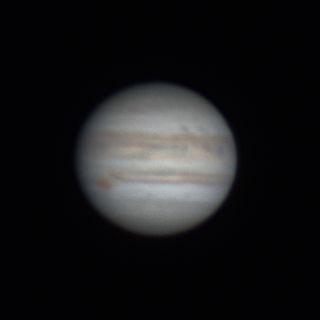
Jupiter (Sep 5, 2020 9:45 PM EDT)
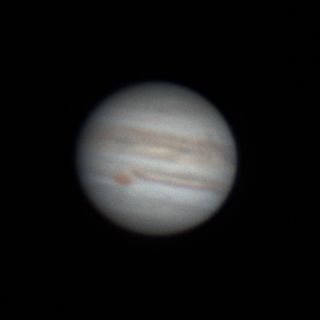
Jupiter (Sep 5, 2020 10:15 PM EDT)
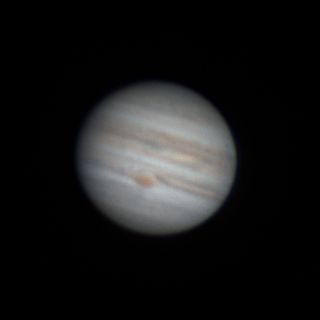
Jupiter (Sep 5, 2020 10:45 PM EDT)

Jupiter (Sep 5, 2020 11:15 PM EDT)
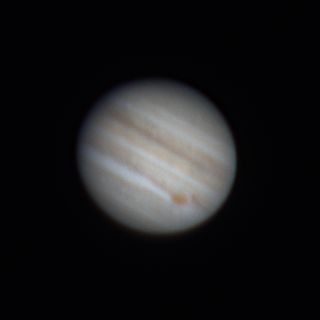
Jupiter (Sep 5, 2020 11:45 PM EDT)
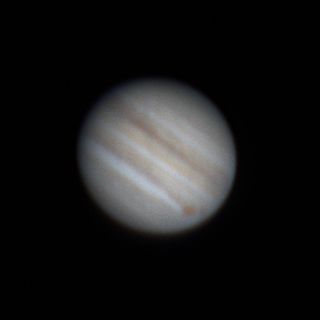
(You may wonder why the images twist down to the right as the night went on instead of remaining straight. The first image was taken when Jupiter was nearly due south, but as each successive image was made the earth’s rotation has moved Jupiter towards the west and closer to the horizon and twisted the orientation.)
Finally, here is an animation made from my entire 2.5 hour long series of eleven observations.
Jupiter (Sep 5, 2020 9:15 - 11:45 PM EDT)
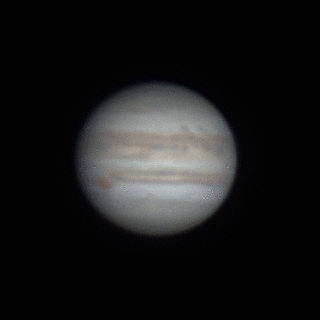
Some other features of note
The two prominent dark brownish bands are called the north and the south equatorial belts. (The Great Red Spot is embedded in the south equatorial belt.) The north equatorial belt especially contains a number of embedded and nearby dark gray objects that are also atmospheric storms. I think they are especially noticable in the animation. About halfway between the equator and the pole, you can make out the fainter north and south temperate belts.
You will also notice that the planet appears slightly squished – the polar diameter is smaller than the equatorial diameter. This is because centrifugal force from the extremely rapid rotation pushes the equator out.
Bonus: Jupiter along with its satellite Io and Io’s shadow
Here’s an image I took (using a different camera and with better “seeing”) a little over a year ago. Besides showing the satellite Io as a white spot just to the right of the planet and even with the north equatorial belt, it also shows the shadow cast by Io as the black spot superimposed on the north equatorial belt. Notice the different appearance of the equatorial belts, especially the north one. The appearance of Jupiter can change significantly from month to month and year to year. Occasionally one of the belts can even fade to invisibility.
Jupiter (July 28, 2019 12:15 AM EDT)
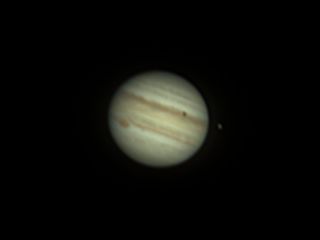
Some details about how these images were made
Unlike all the other blog entries I’ve posted before, these pictures were made using my old Meade 8” SCT telescope since its longer focal length provides more magnification – needed for small objects like planets. Instead of stacking many exposures of 2-5 seconds each to reveal dim objects as described in my About page, for Jupiter I am using a process called “lucky imaging.”
In “lucky imaging” I record high speed video at approximately 150 frames per second. Although atmospheric turbulance causes the image to swim constantly from instant to instant, some small fraction of the images are better (sharper and more detailed) than the rest. A computer program analyzes each image and keeps only the best 10% of them, and these are then stacked together to produce the final image.
The following video is part of the raw data for the 10:15 image. It is a pretty good representation of what you would have seen if you had actually been looking through the telescope eyepiece. (Note that the “seeing” was not very good that evening – there is quite a lot of atmospheric turbulence.)